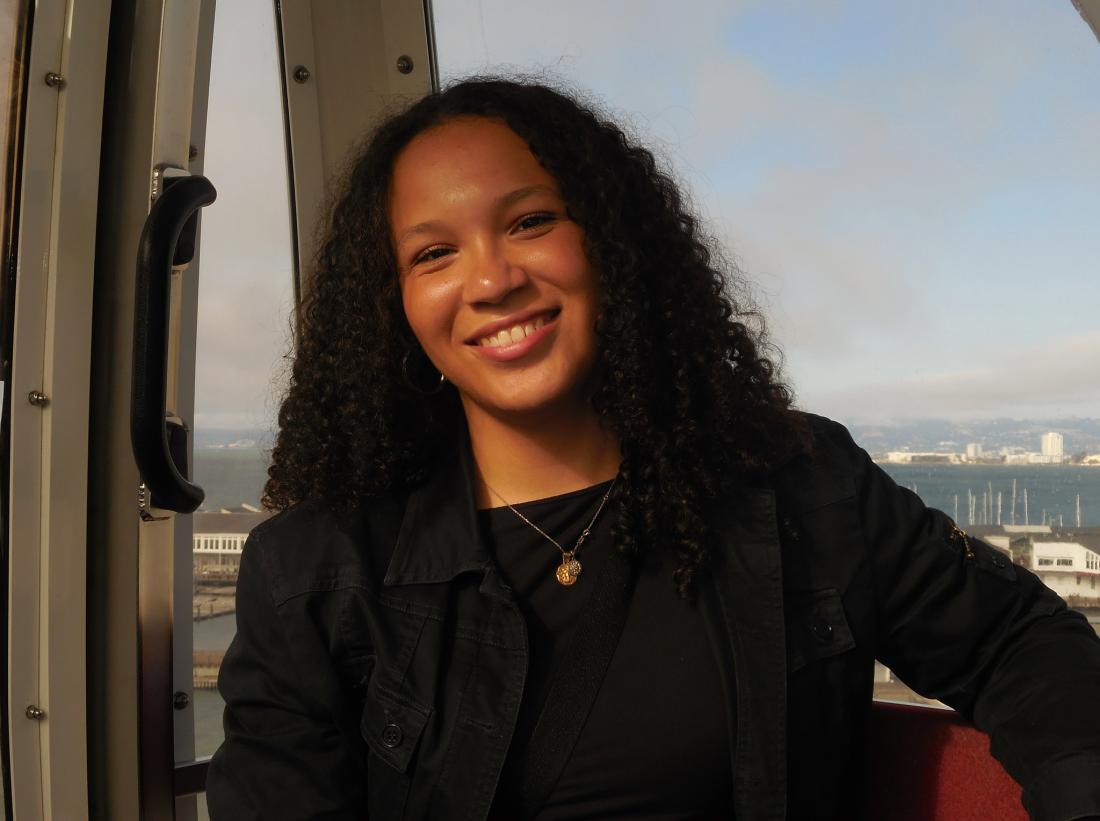Kylee Pastore Asirvatham

Our series spotlighting Humanities & Arts students who spent eight weeks at Stanford University through the Stanford/CCNY Summer Research Program in the Humanities continues. The program pairs up to five H&A students with Stanford faculty mentors, includes a weekly seminar on research and graduate applications, and offers space to pursue a focused project.
In this installment, we feature Tara Sanchez, a fourth-year student in the Division of Humanities pursuing her BA/MA in History. Tara’s research at Stanford explored Chicano activism around bilingual and bicultural education—investigating both grassroots and legal methodologies that shaped the fight for equitable schooling. Inspired by her own classroom fieldwork in New York City and by the multicultural environment of her students, Tara’s project traced how Chicano movements in California redefined education for generations to come.
“Being in an environment where academia and research are encouraged stripped away a lot of my imposter syndrome. I realized I do belong in these spaces.” —Tara Sanchez
Read on for Tara’s full Q&A—her reflections on research, community, and how Stanford reshaped her sense of what’s possible after CCNY.
Q: What was your research project about, and how did you choose that topic?
My project explored Chicano activism around bilingual and bicultural education. I investigated the specific methodologies of both grassroots organizations and legal organizations. Before switching to the History BA/MA program, I was completing the Social Studies Secondary Education track, where I did extensive fieldwork in the classroom. The semester I applied for the program, my fieldwork placement was at an international school where all the students were English learners. That experience in a multicultural and multilingual classroom inspired me to do a deeper dive into the history of bilingual education in America. Stanford's location in Northern California proved to be a perfect place to study the impact of Mexican and Chicano activism, considering its deep implications for California and the wider Southwest.
Q: Did this experience change how you think about your future academic or career goals? If so, how?
Up until this point in my academic career, I had pursued my undergraduate degree with the intention of becoming a high school teacher. The certification track for teachers in NYC is very strict, and because of that, I hadn’t explored many other post-grad options. The Stanford research program opened my eyes to the array of possibilities that exist for PhD students. Especially as a first-generation student, I was unaware of the post-grad opportunities I have access to. Being in an environment where academia and research are encouraged stripped away a lot of the imposter syndrome I’ve felt in academic spaces and helped me realize I do belong in these spaces.
Q: What was your favorite part of the Stanford community—academic, social, or even just biking around campus?
I truly enjoyed being around other humanities students passionate about research. The CUNY humanities students had a weekly seminar with Stanford Professor Alexander Nemerov, and hearing about my peers’ projects was one of the most enlightening experiences. I got to expand my knowledge of disciplines I was less familiar with, like Philosophy and Comparative Literature, both through our seminars and through the conversations we had as we became friends.
Despite all of us being from CUNY schools, I didn’t know anyone before the program—but the bonds I formed with my peers and the fun moments we shared at Stanford are some of my most cherished memories of the summer. I also enjoyed having a bike. I actually learned how to ride while on campus, and it was freeing and peaceful to ride to the library every morning. The Stanford faculty were also very supportive and willing to connect me with other academics who could help with my research, which meant a lot since I had never been in an environment like this before.
Q: How did this program help you grow as a researcher, a student, and a person?
This program made me a more well-rounded researcher of history. I worked with materials and sources I hadn’t used before, such as visual art and oral histories. My research was both broad—looking at patterns of activism across a large region—and intimate, as I investigated individual stories within the movement.
Q: What would you say to other CCNY students who are thinking of applying?
If you’re a CCNY student looking to experience what it’s like to be a post-grad student or to conduct research at an institution like Stanford, this is the perfect opportunity. As someone who has lived in NYC my whole life, this experience gave me clarity about what life is like in a more suburban part of the country. Especially as CUNY students, we juggle a lot during the semester and don’t always get to dedicate 100% of our time to academics. Taking this time to focus on research and to “test drive” being a PhD student gave me perspective for the future if I choose that path.
Q: What’s next for you now that you’ve completed the program?
I’ll continue my BA/MA program, and as I move through my master’s classes, I plan to seek out more research opportunities. I want to expand my project to include bilingual education for the Puerto Rican diaspora in New York City.